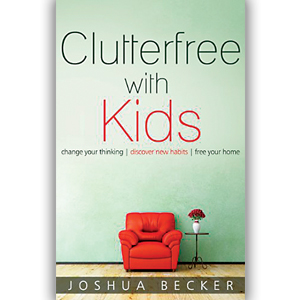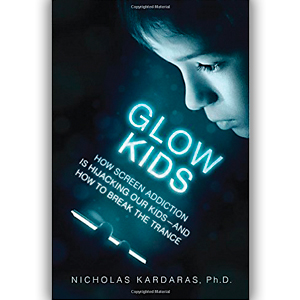
Elbows Off the Table, Napkin in the Lap, No Video Games During Dinner
 In many ways, our modern age has become more casual than ever. People wear jeans to church. Kids greet adults by their first names. And meals often consist of fast-food, which doesn’t require utensils. While I certainly do not wish to return to the formalities that Downton Abbey has made famous, the truth is I would like my children to have good manners, but I’ll be the first to admit I’m not sure what to introduce or enforce when. Therefore, this month I’m blogging about Elbows Off the Table, Napkin in the Lap, No Video Games During Dinner by Carol Wallace.
In many ways, our modern age has become more casual than ever. People wear jeans to church. Kids greet adults by their first names. And meals often consist of fast-food, which doesn’t require utensils. While I certainly do not wish to return to the formalities that Downton Abbey has made famous, the truth is I would like my children to have good manners, but I’ll be the first to admit I’m not sure what to introduce or enforce when. Therefore, this month I’m blogging about Elbows Off the Table, Napkin in the Lap, No Video Games During Dinner by Carol Wallace.
What I love about this title is that it’s a step-by-step guide that’s broken down by ages. In other words, I can turn to the section on “The Age of Reason” to find out what to do about my 8 year old, who still forgets to use her napkin, and then flip to “The Young Sophisticate” for how to advise my 11 year old, who still forgets to offer her friends food and drink before serving herself. Now, of course, the book builds off of the “dawn of civilized behavior” and I’ll admit I read through “The Basic Training” for children 3 to 5 just to make sure my kids had mastered them. For the most part we were on track.
But let’s face it, as Wallace points out, “Teaching manners is a long-term project,” and the modern parent is busy juggling a million different things so it’s easy to see how enforcing good manners can fall by the wayside, except Wallace makes a convincing argument. She believes, “Good manners are an essential part of our children’s education…It’s an important for a basic, if cynical, reason: People with good manners are more likely to get what they want.”
While modeling good manners is an important part of the equation, as far as Wallace is concerned, manners need to be taught. She maintains, “A large proportion of manners – particularly those concerning eating – involves going against your instincts. Waiting to be served, waiting to eat, tasting things you don’t like the looks of, taking small bites, and chewing with your mouth closed – this is the behavior that civilized Western society expects. These manners don’t come naturally.”
Wallace wrote this book because she believes parents are having a hard time defining politeness since we live in an age that’s discarded old-fashioned behavior. That’s why she’s provided a gradual introduction to the new habits. Everything from how to greet people to telephone manners to audience participation is repeated, increasing becoming more complex as your child ages.
Since my 8 year old had just celebrated her birthday, I found myself combing through the “Thank-You Notes” chapters. Nothing irritates me more than sending a present to someone and then having to follow up to make sure they got it because they didn’t have the decency to acknowledge the gift. So what is the protocol? Well, at my daughter’s age, since she opened her presents in front of her friends, it was acceptable to simply give a verbal, “Thank you.” However, for people who aren’t present when the gift is opened, Wallace argues a written thank-you note is a must. I ended up sending a picture of my daughter opening presents to as many relatives I could via my phone and email. For those older members of our family who can’t be reached that way, my 8 year old either wrote a brief note in a card or a message on a picture she’d already made. In both instances, the task was manageable and the results will certainly brighten someone else’s day. After all, as Wallace points out, “People like children who write thank-you notes.”
I’ve always been a stickler when it comes to meeting people, never allowing my children to play too shy to speak, believing as Wallace does, that it’s rude behavior. And when it comes to playdates and table manners, I pretty much know what I have to nag them about. Therefore, the part of the book I’ll be turning to the rest of the month is “Good Housemates,” for picking up after themselves is not my children’s forte.
As far as Wallace is concerned, by age 6 they should be able to meet these intermediate rules:
Pick up what you leave around the house. Put the cap back on the toothpaste tube. (Mine avoid this like the plague.) Rinse the toothpaste out of the sink after brushing your teeth. (Mine’s got hermit crab food sprinkled all over the toothpaste since that’s wear my younger daughter replenishes its water supply every morning.) Put your dirty clothes in the laundry hamper. (Oh, don’t get me started on this one.)
Thankfully, Wallace recognizes that many of us will look at her lists and think there’s no way we could get our kids to do these things. She writes, “I wouldn’t be able to either. Not all of it. There will be things that just don’t take. I am still, in spite of all my efforts, quick to interrupt.” Since I could relate to the interruptions in particular, I knew exactly what she meant. What Wallace wants readers to take away from her book, however, is that our children can learn most of it and that we’ll be glad once they do.
Follow @WinterhalterV on Twitter for updates on blog posts or like Parenting by the Book on Facebook.
Read my other blog Befriending Forty.






